8 EASTERN FRUITS & VEGGIES YOU’VE NEVER HEARD OF
But Should Invest In!
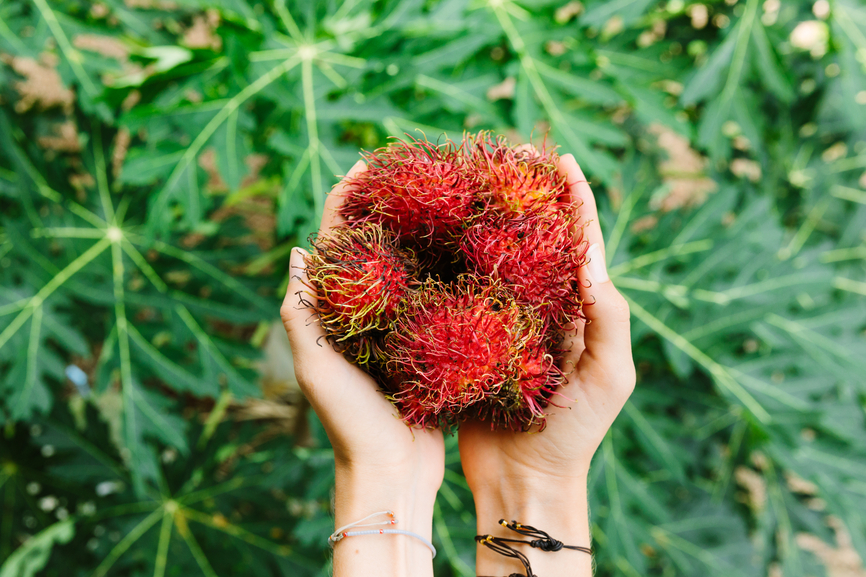
Do you ever go to the farmer’s market or grocery store and see something in the produce aisle that looks like it came from an alien planet?
Well, one of those far out fruits and veggies just might be on this list. We’ve rounded up some of our favorite Asian fruits and vegetables that you’ve probably never heard of. They’re nutritious, delicious, and can even pack a healing punch.
In Traditional Chinese Medicine, foods have both Natures and Flavors. There are five of each category, and you can pick the best foods for your body by figuring out what categories your food falls into. The Nature of food is related to how it changes your body’s temperature, and you should try to balance both cooling and warming foods for a harmonious diet. On the other hand, the five Flavors tell you what organs and systems a food will affect. Sweet foods work on the spleen and stomach, sour food will have an effect on the liver and gallbladder, and so on.
Just remember to pick these fruits and veggies up only when they’re in season. In Eastern traditions, food can be medicine, and the best way to reap those healthy benefits is by having a well-rounded diet based on fresh, seasonal foods. So whether some of these funky fruits and veggies end up in your shopping cart or not, make sure you stick to that seasonal rule.
Bitter Melon
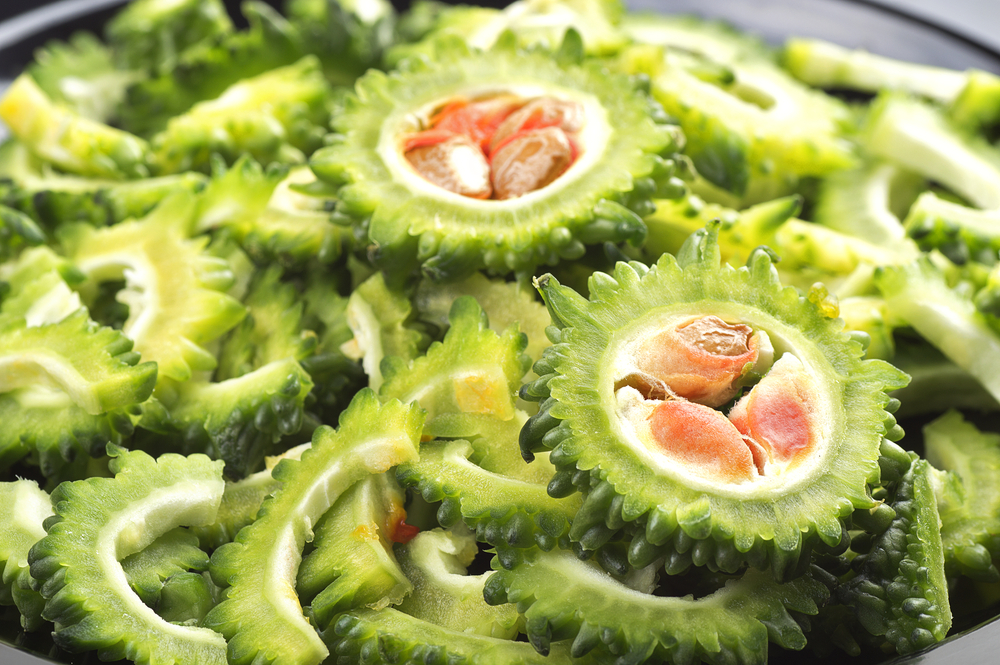 Bitter melon is a Chinese gourd that looks like a small, bumpy cucumber. As the name suggests, it’s pretty bitter, but it gets much milder when you blanch it. In Chinese culture, bitter melon is a popular stir-fry ingredient because it pairs well with other strong flavors, like pork or salted black beans.
Bitter melon is a Chinese gourd that looks like a small, bumpy cucumber. As the name suggests, it’s pretty bitter, but it gets much milder when you blanch it. In Chinese culture, bitter melon is a popular stir-fry ingredient because it pairs well with other strong flavors, like pork or salted black beans.
Bitter melon is also known for its health benefits. It’s jam packed with fiber, Vitamin C, Iron and calcium. In TCM, it’s considered a cooling food that dispels heat in the body. In much of Asia, bitter melon is taken as a food for diabetics. Because it’s bitter, it’s linked to the heart and small intestine. Thanks to its cooling properties, it’s especially popular with people in hotter climates. Note that the bitterness tends to be lost as the fruit ripens to an orange-red color, so the therapeutic value will change.
Durian
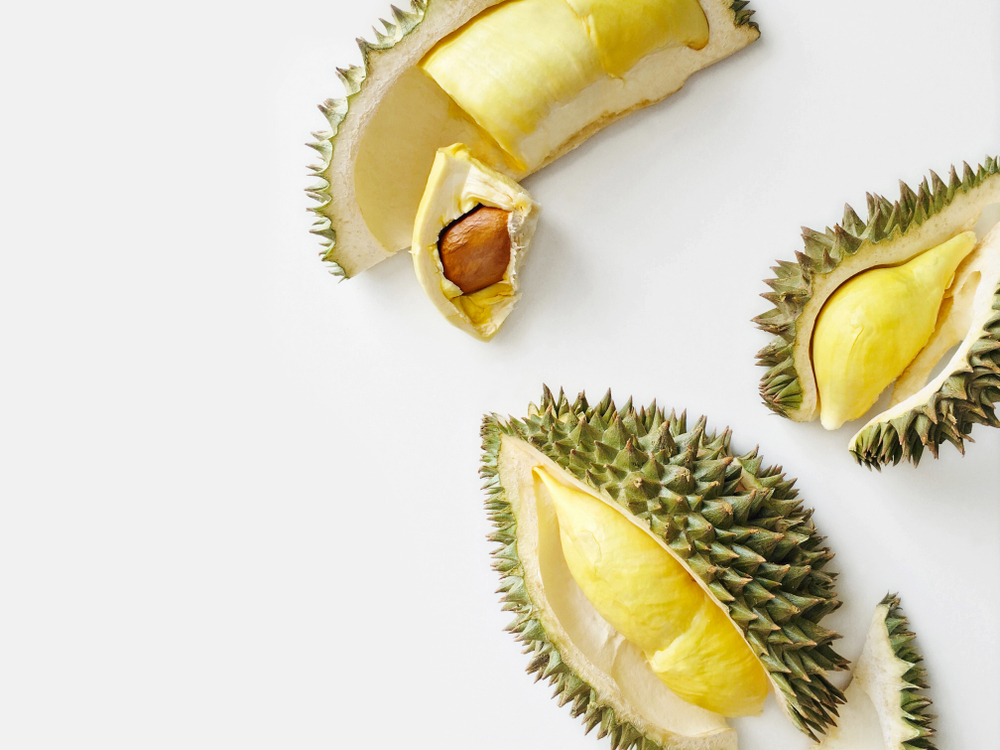 Durian is a polarizing fruit. It’s known as the “king of fruits” and is very popular. However, it can also be expensive–and very, very stinky. That’s right, stinky. In fact, its scent is so intense that it’s even banned on public transportation in some east Asian countries!
Durian is a polarizing fruit. It’s known as the “king of fruits” and is very popular. However, it can also be expensive–and very, very stinky. That’s right, stinky. In fact, its scent is so intense that it’s even banned on public transportation in some east Asian countries!
Durian is a fairly large fruit with a hard, pointy shell. On the inside, durian is whitish-yellow, and has a custardy taste. It’s also a little savory, so you can eat it straight, use it in a dessert, or cook with it. According to TCM, durian has warming properties so skip it if you already have a lot of heat.
Mung Bean
Mung beans are a popular ingredient in Chinese food and can be found in everything from soup to dessert. There’s even mung bean wine, and the sprouts are used in lots of recipes too.
Mung beans and mung bean sprouts are a great health food because they’re low in calories, fat, and carbs but have plenty of Vitamin C and protein. In TCM, mung beans are known for their cooling and detoxifying properties. They can even help clear up your skin!
Rambutan
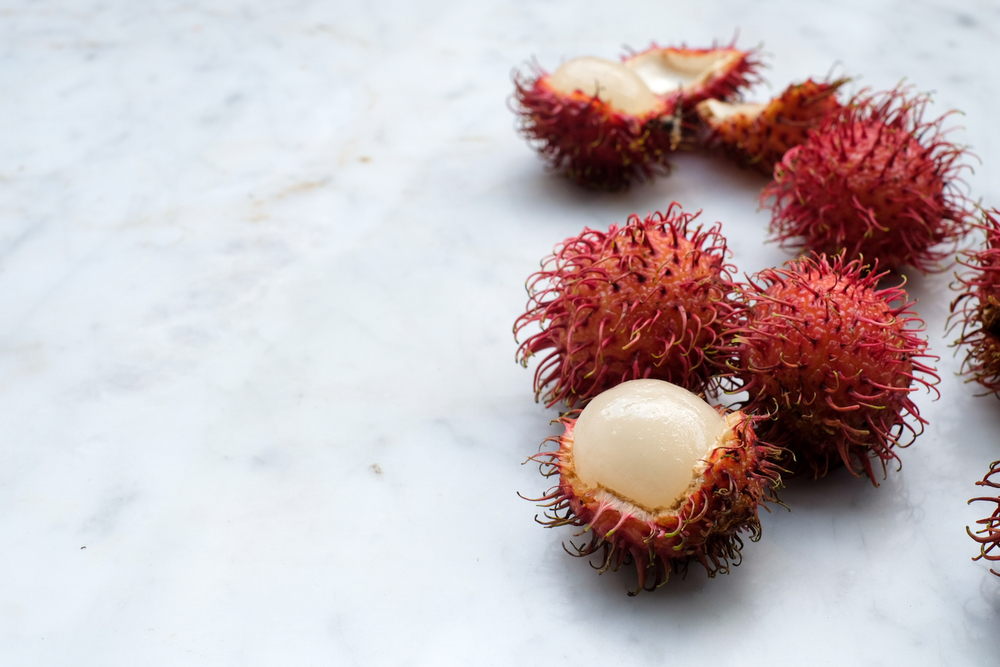 You may never have heard of rambutan, but you might know its relative, lychee. Like lychee, rambutan is a small, round tree fruit that looks like a spiky red berry. Rambutan looks kind of like a red, furry marble. When you cut into a rambutan, the shell will break open revealing a creamy white flesh that tastes flowery and a little acidic.
You may never have heard of rambutan, but you might know its relative, lychee. Like lychee, rambutan is a small, round tree fruit that looks like a spiky red berry. Rambutan looks kind of like a red, furry marble. When you cut into a rambutan, the shell will break open revealing a creamy white flesh that tastes flowery and a little acidic.
Rambutan has lots of fiber, so it will keep you full and help digestion. It’s also chock full of Vitamins A and C, iron, and antioxidants so it is a delicious healthy food. In TCM, rambutan is a warming fruit like kumquat, pomegranate, or guava.
Silk Squash
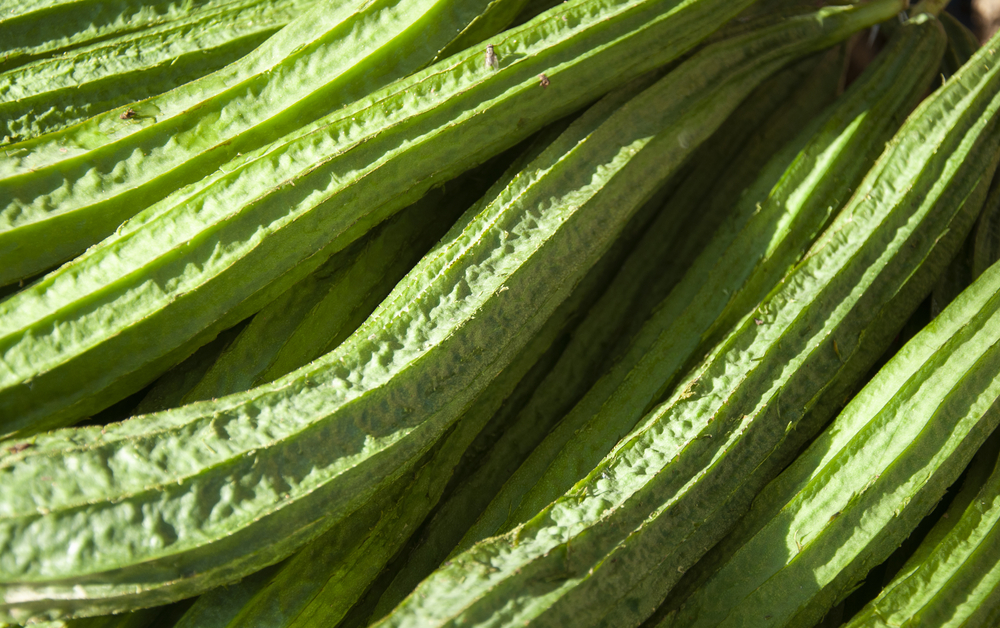 Silk squash, also known as Chinese okra or luffa (pronounced loo-fah), is another veggie you may not have heard of. In eastern cultures, silk squash is eaten when it’s not fully grown because the adult squash are bitter. The squash itself is long and thin, and people usually fry it up. It’s a great substitute for okra or zucchini.
Silk squash, also known as Chinese okra or luffa (pronounced loo-fah), is another veggie you may not have heard of. In eastern cultures, silk squash is eaten when it’s not fully grown because the adult squash are bitter. The squash itself is long and thin, and people usually fry it up. It’s a great substitute for okra or zucchini.
In TCM, silk squash is both neutral and sweet, so it won’t upset your body’s temperature balance. Silk squash is used in eastern medicine to boost blood circulation and treat chest pain and congestion, but you can also use it to exfoliate your skin and remove toxins. Talk about multi-tasking!
Lotus Root
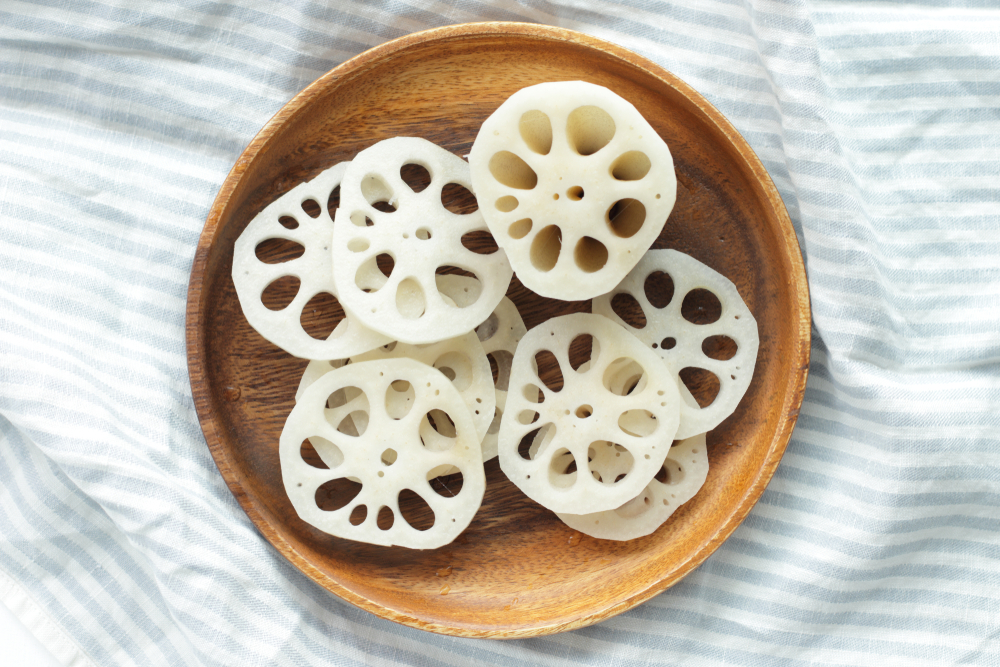 You might be familiar with lotus flowers, which are gorgeous water plants and show up a lot in east Asian art. But did you know you can eat the root of a lotus plant? It’s true, and it’s a pretty common ingredient in many Asian cultures. The root itself looks kind of like a potato on the outside, but when you slice into it, there are little channels that make it look like a lace doily. You can fry up lotus root for a crunchy, crisp texture that’s the perfect addition to stir-fries, noodles, and soup. But you can also eat it raw, if you like.
You might be familiar with lotus flowers, which are gorgeous water plants and show up a lot in east Asian art. But did you know you can eat the root of a lotus plant? It’s true, and it’s a pretty common ingredient in many Asian cultures. The root itself looks kind of like a potato on the outside, but when you slice into it, there are little channels that make it look like a lace doily. You can fry up lotus root for a crunchy, crisp texture that’s the perfect addition to stir-fries, noodles, and soup. But you can also eat it raw, if you like.
In Traditional Chinese Medicine, lotus root is thought to stop bleeding. And because of its sour taste, lotus is known for helping digestion and circulation.
Schisandra
Schisandra Berries are often sold on the streets of east Asian countries, and they make a delicious, refreshing snack in the summer. These small berries are sweet, bitter and sour, and the texture is a lot like a strawberry. You can eat them with the skin on, but make sure to soak them in salt water first to get rid of any bugs that have nestled inside.
Traditional Chinese Medicine practitioners use schisandra berries to astringe leakage and which refers to its ability to prevent coughing, asthma, diarrhea and sweating. They can increase circulation and help get rid of illness caused by Wind Cold, too. It can do this because it has all 5 flavors.
Jackfruit
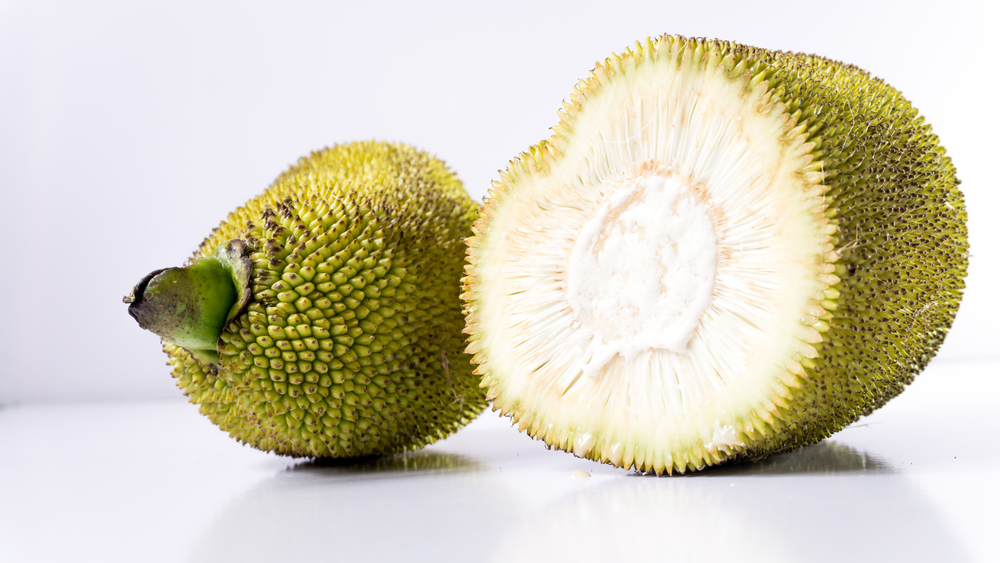 If you’re a vegan, vegetarian or just like meat alternatives, you may have heard of jackfruit before. It’s recently earned a place for itself on some western grocery market shelves because it’s a large, neutral-flavored fruit that has a fairly meat-like texture.
If you’re a vegan, vegetarian or just like meat alternatives, you may have heard of jackfruit before. It’s recently earned a place for itself on some western grocery market shelves because it’s a large, neutral-flavored fruit that has a fairly meat-like texture.
Also known as Jack or Jak, this tropical fruit soaks up whatever flavors you cook it with, so it’s very versatile. You can eat it raw or cook it up, and it’s been used to make everything from vegan pulled pork to vegan Philly cheesesteak.
Associated with the lung and and large intestines in TCM, jackfruit is a neutral fruit that can tonify your Qi and help with digestion. TCM practitioners also prescribe it as an anti-hypertensive ingredient and male aphrodisiac. It’s also full of Vitamin B5, which can help boost your metabolism and Vitamin B3 to lower bad cholesterol. So try swapping out your meat with jackfruit one night a week for a healthy, delicious dinner.
Were you familiar with any of these funky fruits and veggies? You can find all of them at your local Asian grocery market when they’re in season, but they might pop up at a supermarket or farmer’s market, depending where you live. They might look different, but they’re delicious and full of benefits for your whole body. So next time you see an alien-looking fruit or veggie in the produce aisle, give it a try!
Newer
What Kind Of Insomnia You Have, According to Eastern Medicine
Older
Spleen Health 101: The Best Herbs For A Healthy Spleen
Comments (0)
Leave a reply
You must be logged in to post a comment.




